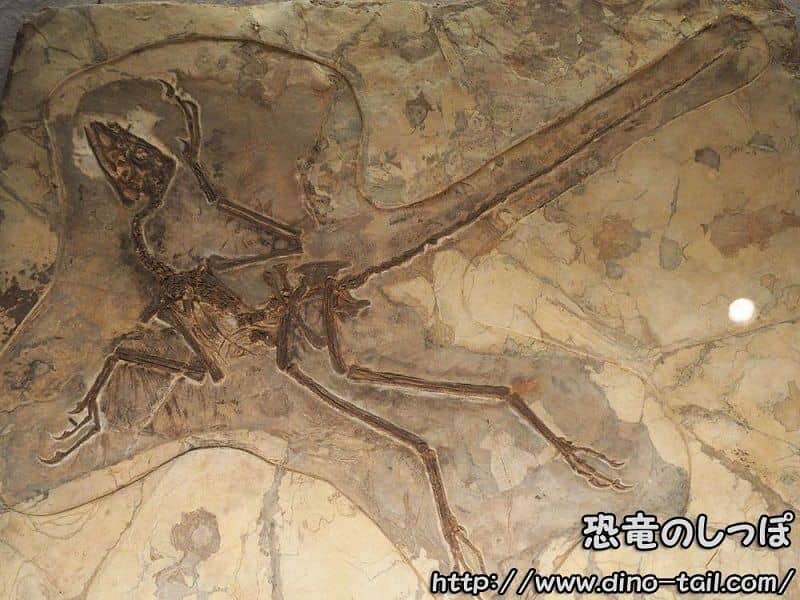About Anchiornis
| Scientific Name (Genus) | Anchiornis |
| Meaning of Name |
Near bird
anchi (near) [Greek] - ornis (bird) [Greek] |
| Classification | Saurischia, Theropoda, Anchiornithidae |
| Total Length | Approx. 35-50cm |
| Diet | Carnivorous (lizards, fish, etc.) |
| Period | Late Jurassic (approx. 160 million years ago) |
| Subclassifications/Species | Anchiornis huxleyi |
| Year of Paper Publication | 2009 |
| Genus Name Publication | Xu, X; et al. (2009). A new feathered maniraptoran dinosaur fossil that fills a morphological gap in avian origin. |
The First Scientifically Reconstructed Color

Anchiornis was a crow-sized feathered dinosaur discovered in Late Jurassic strata in Liaoning Province, China. One of the reasons this dinosaur is so important in the history of science is that it is the first dinosaur in history whose entire coloration has been reconstructed based on scientific evidence.
In 2010, researchers analyzed microscopic "melanosomes," or pigment cells, left in the fossilized feather impressions of an exceptionally well-preserved Anchiornis specimen. By comparing the shape and density of these melanosomes with those of modern birds, they were able to successfully determine the colors of the feathers.
The reconstructed color of Anchiornis was surprisingly vibrant. Its body was primarily black to dark gray, with bold black and white stripes on its forewings and hindwings. It also had a reddish-brown, crest-like plume on the top of its head and red speckles on its cheeks. This was a groundbreaking discovery, suggesting that dinosaurs were not just drab-colored creatures but may have used complex coloration for communication.
Four Wings and the Mystery of Avian Evolution

Another major feature of Anchiornis is that it had long flight feathers not only on its forelimbs but also on its hind limbs, a condition known as "four-winged." This provides an important clue in exploring how the ancestors of birds acquired the ability to fly. However, it is believed that Anchiornis could not fly by flapping its wings powerfully like modern birds, but rather used its hind wings as stabilizing surfaces for gliding from tree to tree or during steep descents.
Regarding its diet, fossils of regurgitated pellets containing the bones of lizards and fish have been found in its throat and stomach, indicating that these were its prey. The behavior of regurgitating indigestible matter is also seen in modern birds as a way to lighten the body in preparation for flight.
The most striking reason for the discovery of Anchiornis was its age. Anchiornis was found in strata about 10 million years older than Archaeopteryx, which had long been considered the "oldest bird." This resolved a major contradiction (the temporal paradox) in explaining the evolution from dinosaurs to birds: that feathered dinosaurs with bird-like features only appeared in periods newer than the ancestors of birds. The discovery of Anchiornis has made the theory that birds evolved from dinosaurs much more robust.
